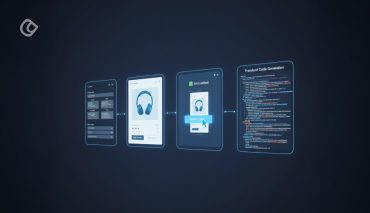With millions of businesses making their online presence felt, and wanting to make it more robust, they need to resort to several different digital marketing tools and techniques. Today, just having a website, doesn’t cut it. You need an active social media presence to interact with your followers and fans, advertisements to drive more traffic, and convince people you are serious about your business, and microsites and landing pages to promote specific campaigns related to a particular product or service.
At first glance, microsites and landing pages may seem to be the same thing; however while there are some similarities, they are also quite different.
A landing page is a part of the main website – it is one single page of the parent website – which may contain even hundreds of pages, especially if it’s an e-commerce site of a large company with several products and services on offer.
A microsite, on the other hand, can be a standalone website, or published as part of the parent site, and can be one or more pages.
They are both often created for a short-term, and for a specific purpose or campaign. So which one is ideal for your purpose? Which one will do the job for you?
Whether a microsite is better than a landing page or vice versa is a question that has been hotly debated for quite some time now, and opinions continue to differ. There are quite a few people who consider microsites and landing pages as interchangeable, simply because they are not fully aware of the actual functionality and differences between the two tools. As an entrepreneur, it is crucial that you have a very clear understanding of the two, and recognize the work each tool does, and also understand the differences, so that you can make the right decision to enjoy maximum success for your campaign.
To put it very simply, no one is ‘better’ than the other. It’s just that in some instances, a landing page will suffice, and in some others, you may want a microsite. So you could say that in today’s competitive and dynamic business scenario, it is important to use both – at the appropriate times. Now that we have established that, let us take a detailed look at both:
Microsite

A microsite is a miniature targeted website, which is quite often used to inform, educate or entertain – and sometimes, convert – and they achieve these goals perfectly. A website on the other hand, contains everything about your brand, values, products – it’s a comprehensive tool of information and most often, selling. A microsite is a specific, standalone domain, unlike a landing page. When comparing microsites vs landing pages, microsites are often topic based and contain a few pages, as compared to your main website which may contain dozens of pages. These few pages on the microsite contain specific content that engage users. It tells a story, usually for certain specific products or services, and creates an interactive and entertaining experience for users. They usually create brand awareness, and help build a fan following, or brand loyalty, when used as a part of a larger campaign. A microsite can also be used to promote a specific campaign when the product or service on offer is complex, and the details cannot be conveyed in a couple of lines to the user.
Benefits and Advantages of Microsites:
- They are fantastic tools of brand awareness and brand loyalty
- They are engaging, entertaining and informative
- They encourage users to click through the site to view more pages, increasing the time spent interacting with your brand
- It helps to lower the bounce rate
- A specific URL for your microsite means it can be used more effectively in offline advertising like TV, print, or radio
- A campaign-specific URL is usually more easy to remember and can generate more traffic
- It is a great way to drive more organic traffic to your site
Disadvantages of Microsites:
- They are generally quite expensive to set up
- You need more time to create and deploy a microsite, especially compared to landing pages
- You need to buy additional domain names
- They necessitate more time and effort in maintaining
- Calls to Action are more difficult to create for microsites
- Measuring ROI of microsites is difficult
- You need a long time to put it together
- There is a chance that a campaign-specific URL could confuse loyal customers of the parent brand/website.
Landing Page

A landing page is designed to promote a particular product or service and is hosted on your main domain, with the URL clearly reflecting the campaign you are promoting. If your website is a comprehensive tool of information and sales, your landing page is a tool designed to nudge your prospect further down your sales funnel. It’ specific purpose is conversion. Here, persuasive design rules; entertainment or information plays second fiddle. In fact, a landing page is pretty stark compared to a microsite – there are usually no links and no other information; nothing to distract the prospect from the task at hand.
A landing page is normally hyper-focused, SEO friendly with keywords, and conveys facts and figures in a concise manner, designed to convince the user to perform a specific action (clicking on the CTA to buy or download the lead magnet, sign up for a free trial or product samples, or to subscribe to your newsletter). It is usually devoid of eye-catching stuff like parallax scrolling, animations or videos. Among microsites vs landing pages, landing pages generally boosts the SEO of your website, making it more searchable with the use of topics and terms prospective buyers use when searching; a successful landing page will result in your website ranking improve in the search engine result pages. If your website’s home page focuses on navigation and info, your landing page focuses on conversion.
Benefits and Advantages of Landing Pages
- Landing pages are pretty easy and relatively inexpensive to create
- They can be deployed quickly
- It’s not necessary to buy additional domain names
- They don’t require heavy maintenance
- They are excellent tools of conversion
- In general, they don’t require huge budgets
- By using UTM tags and short link services you can easily measure the ROI
- You can easily recognize, and monitor when users perform the required action on your landing page and the information is sent straight to the campaign analytics tool
Disadvantages of Landing Pages
- They reveal minimal information, which may not satisfy many users
- They are not very engaging
- They cannot be used as an alternative for an actual website
- It is critical that you tell your story in a way your ideal buyer persona will find attractive and compelling – and you have be extremely concise and clear
Microsite Vs Landing Page: Which one do you need and When?

So now we know two things for sure:
- If your goal is brand awareness or brand building, engaging with your potential buyers and providing them with a delightful user experience(UX), and tell a big story, microsites are your best bet.
- If your goal is driving more traffic to your parent website, creating awareness about one single specific product or service and increase conversion with a direct call to action, there is nothing more effective than a landing page.
So when you are trying to decide whether you need a microsite or a landing page, you need to first think of those two facts. Other things you need to take into consideration:
- The size of your team
- The size and importance of your campaign
- The time available
- Your budget constraints
- Your target audience (buyer persona): If they prefer being in charge and want to take their own decisions, you will have more success with a microsite; if they prefer to be guided step by step, by all means, deploy a landing page.
- The commitment you are asking the user to make: If it is a small commitment, like downloading a free e-book, a landing page is perfect. However, if it is larger, like say, downloading a software demo, you may want to consider a microsite, because it is highly likely that your user may want more detailed and in-depth information before committing to something like this.
Both of these are very powerful tools in their own way, and you may need to use both, depending on the purpose and occasion. Use the right tool in the right situation rather than fall into the rut of deciding that there is only one solution. Ultimately, you need to do what will be good for your brand. Even engaging with users can eventually lead to conversion; so don’t ignore microsites – they may work in a different way but they can also help you to increase conversion, albeit more slowly.
You may also have complicated situations where the commitment is small but still, your audience wants more details and wants to be completely in charge. Or the product offering may be complex but your prospects may need step by step guidance. This is when it can get difficult and frustrating for you as an entrepreneur!
One thing you can and should do is a test which one works best for your target audience, by requesting a few industry experts to use it or through random beta testing.
Landing pages, on the other hand, give you quick bursts of increased traffic and conversion. Rather like yin and yang, both are necessary to be successful in business online.
Acodez is a leading web design company in India. We have catered to clients in India and abroad with our sophisticated set of solutions that have been customized to meet the needs of the present day. We have already served 700+ clients from across the globe and have won more than 10 international awards for our contributions to the world of web design and development.
Looking for a good team
for your next project?
Contact us and we'll give you a preliminary free consultation
on the web & mobile strategy that'd suit your needs best.









